The landscape of software development has transformed dramatically, moving from the rigid structure of the Waterfall model to the dynamic, collaborative DevOps methodology. This shift has accelerated development cycles, improved product quality, and boosted customer satisfaction. This blog explores the journey from Waterfall to DevOps, highlighting key milestones and how our CMS solutions support modern development practices.
1. The Waterfall Model: A Linear Legacy
In the early days of software development, the Waterfall model provided a structured, sequential approach. Each phase, requirements gathering, design, development, testing, and deployment—was completed before the next began. While organized, this method had limitations:
- Limited client feedback until late in the process.
- Inflexibility to accommodate changing requirements.
- Potential delays due to rigid phase dependencies.
These challenges paved the way for more adaptive methodologies, but Waterfall laid the foundation for disciplined development.
2. The Rise of Agile Methodologies
Agile methodologies, such as Scrum and Kanban, emerged to address Waterfall’s shortcomings. By prioritizing flexibility, customer collaboration, and iterative progress, Agile transformed development. Key features include:
- Short sprints delivering working software incrementally.
- Continuous client feedback to refine requirements.
- Adaptability to evolving project needs.
Our CMS platforms support Agile workflows, enabling teams to iterate quickly and align with customer expectations.
3. Continuous Integration: Streamlining Code Integration
Continuous Integration (CI) revolutionized development by enabling developers to merge code changes frequently into a shared repository. Automated builds and tests ensure early detection of issues. Benefits include:
- Reduced integration conflicts through frequent commits.
- Improved code quality with automated testing.
- Faster identification of bugs and compatibility issues.
Our CMS solutions integrate with CI tools, helping developers maintain high-quality codebases with seamless collaboration.
4. Continuous Delivery: Automating Releases
Continuous Delivery (CD) builds on CI by automating the software release process, enabling reliable and frequent deployments. Automated pipelines move code from development to production efficiently. Advantages include:
- Faster delivery of features and bug fixes.
- Reduced manual errors through automation.
- Consistent deployment processes across environments.
Our CMS platforms support CD pipelines, empowering teams to deliver updates swiftly and reliably.
5. The Emergence of DevOps
DevOps bridges the gap between development and operations, fostering collaboration, automation, and shared responsibility. This cultural shift eliminates silos and streamlines the software lifecycle. Core principles include:
- Unified workflows between developers and operations teams.
- Emphasis on automation for efficiency and consistency.
- Continuous monitoring to ensure system reliability.
Our CMS solutions are designed to support DevOps practices, enabling seamless integration and deployment workflows.
6. Infrastructure as Code: Standardizing Environments
Infrastructure as Code (IaC) is a cornerstone of DevOps, treating infrastructure configuration as programmable code. This approach ensures consistency and scalability. Key benefits include:
- Automated provisioning of servers, networks, and databases.
- Version-controlled infrastructure for repeatability.
- Reduced errors in environment setup.
Our CMS platforms integrate with IaC tools, simplifying infrastructure management for scalable web applications.
7. Continuous Monitoring: Driving Performance Insights
Continuous monitoring provides real-time insights into software performance, user behavior, and system health. This practice enhances reliability and user satisfaction. Monitoring advantages include:
- Early detection of performance bottlenecks and security issues.
- Data-driven capacity planning and optimization.
- Improved uptime through proactive issue resolution.
Our CMS solutions support monitoring integrations, helping teams maintain robust and responsive platforms.
8. The Impact of DevOps on Development
The shift from Waterfall to DevOps has reshaped software development, delivering measurable benefits. These include:
- Faster release cycles through automation and collaboration.
- Higher software quality with continuous testing and feedback.
- Increased agility to adapt to market and user demands.
Our CMS platforms align with DevOps principles, enabling businesses to achieve these outcomes with streamlined workflows.
9. The Future of Software Development
As the industry evolves, DevOps continues to advance with innovations like AI-driven automation and DevSecOps, which integrates security into the development pipeline. Emerging trends include:
- AI-powered tools for predictive analytics and testing.
- Enhanced security practices to address cyber threats.
- Greater focus on cloud-native and microservices architectures.
Our CMS solutions are built to adapt to these trends, ensuring businesses stay competitive in the evolving digital landscape.
Conclusion
The transition from Waterfall to DevOps marks a paradigm shift in software development, emphasizing flexibility, collaboration, and automation. By embracing Agile, CI/CD, IaC, and continuous monitoring, businesses can deliver high-quality software faster and more reliably. Our CMS platforms are designed to support this modern approach, empowering teams to build, deploy, and scale exceptional digital solutions. Visit our official website to learn how we can enhance your development journey.

